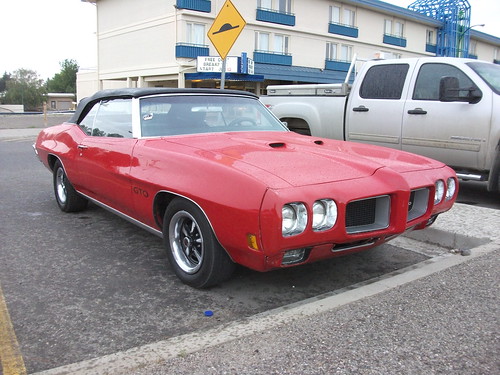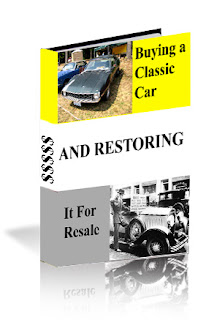Author: Steven GreenwoodDoes your speedometer weave all over the place, or under read following a change of tyres/wheel diameter? If so, there are companies out there that can take gauges that look like they’ve spent the last millennium submerged in a peat bog, strip them down to their component parts, clean and re-work anything as required, and return it to you in tip-top condition.
As with these examples of car components, there are restorers out there who can handle the most derelict of interior trim, woodwork, engine, brake component or bodywork and breathe new life into it. It all depends how far you want to go in restoring your chosen classic – these services don’t come cheap, usually being a much specialised art, so the cost of contracting out work to these classic specialists must always be borne in mind.
How Much Restoration?
In many cases, the renovation of an old body shell will be the deciding factor in assessing how viable it really is to give the work to a professional restoration company. Despite being a fairly cheap car, the Mini for example actually has quite a complicated structure, so unless it is historically significant, or being subject to a cost-no-object restoration, tread very carefully before committing to a professional restoration. A compromise can often be reached whereby the owner does as much preparation work as possible to keep the final costs down to reasonable levels, so it’s worth having a chat with the body shop first.
Spending £3000 having a classic Mk2 Jaguar shell renovated may make some sense, as the finished article in good order could be worth anywhere between £10-20k when finished, but spending that much on a classic Mini (or any other cheaper car, say a Hillman Imp or an old Escort) may be less of a good choice.
Most restoration shops pitch at owners with more widely available cars, such as MGs, Triumphs, and Austin Healeys where the finished article may well be worth anything between £10-15k, and therefore worth spending a few quid on. The advantage with the more popular marques of classic is that body panels can often be acquired from specialist suppliers, saving money in the long run as there is no need to call upon bespoke builders of bodywork panels, with the time and cost involved that having one-off panels made will bring. However if you just want your car restoring to a solid usable condition, you’ll find many regular garages either have a guy in there handy with a Mig welder, or know someone who is.
At the bottom of the scale are the outfits, often one-man bands working from the back of a Mk3 Escort van, that will patch up your classic for the price of a cup of tea, and some beer money. The final finish will be left to you, the owner, but with repairs that are fairly workmanlike with little finesse or care; the end result will always be a compromise and should only really be called upon when money is tight.
Restoration Project Budgeting
As already mentioned, your budget is key to how far to go employing professionals to do up your car. Whereas compromises cannot really be taken with safety issues, such as the brakes and suspension, the renovation of the body shell and interior really comes down to how mad you want to go, and what you plan to do with the car once finished.
If the classic car is a family heirloom, or being restored for keeps with no view to re-sale in the near future, then throwing a good pile of money at it is probably a good way to ensure its future health (so long as it is maintained properly afterwards!). However most people do not have a bottomless pit of cash, so as always, a balance has to be found.
The more you can do yourself the better, as not only will you save money (hopefully), but you’ll learn a lot more about the vehicle than had you just sent it off to the restoration shop, without seeing it again till it rumbles into your garage, glistening and restored.
Finding a Trustworthy Company
Once you’ve decided to have work done on your classic, how do you find a trustworthy company to restore it? With tales around of old cars being left with restoration shops, only for the company to go bust and bailiffs re-possessing everything, including your car, it is well worth taking time to identify a suitable business or individual to deal with.
Recommendations can be found in classic car magazines and by word of mouth, which is probably one of the best ways to go. Get talking to people at local shows, and see which local companies get recommended by owners who have used them before. Try to find a company that is well established, and looks like it has invested in good premises and has a reputation to protect – they are far less likely to mess you about than someone who can only be contacted on a mobile, and who works out of a unit rented weekly. That’s not to say that all coachwork restorers who have a mobile number only are sharks, but it’s one of several things to bear in mind should the worst happen, and you find yourself trying to contact the owner quickly.
With the classic car in the restoration shop, keep close contact with progress and ask to be contacted should anything unforeseen come along, that will require extra funding to fix. After all you may want to reconsider the rebuild of your Ford Pop if it turns out the chassis is terminally corroded and will cost thousands of pounds to renovate (maybe it’s better to find a better chassis instead!).
Before work commences it might also be worth drawing up a schedule of the work you want doing, and getting the garage owner to agree to it and sign the papers too – this will also help if you need to reclaim anything that’s rightfully yours should something go wrong.
Article Source: http://www.articlesbase.com/classics-articles/classic-car-restoration-1342852.html
About the AuthorSureterm are proud to offer articles for Classic Car enthusiasts including reviews, buying guides and latest news. For a Classic Insurance Quote online, visit one of the UK’s most competitive insurance specialists – Sureterm Direct.
$18.00 value – Yours FREE






